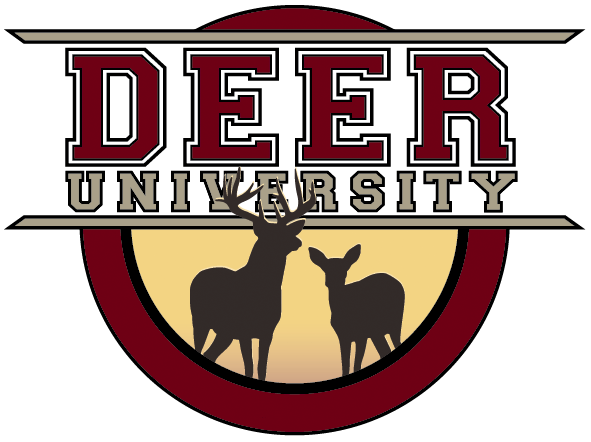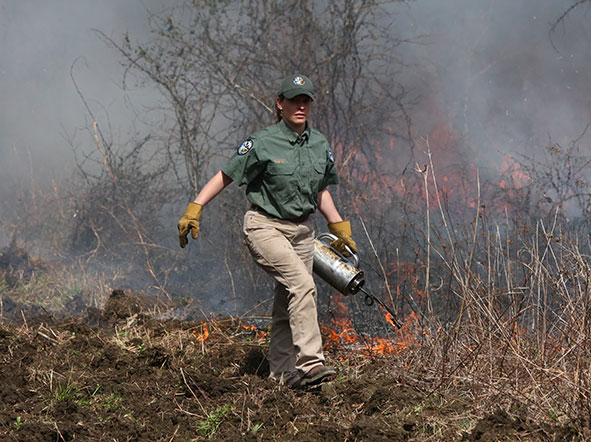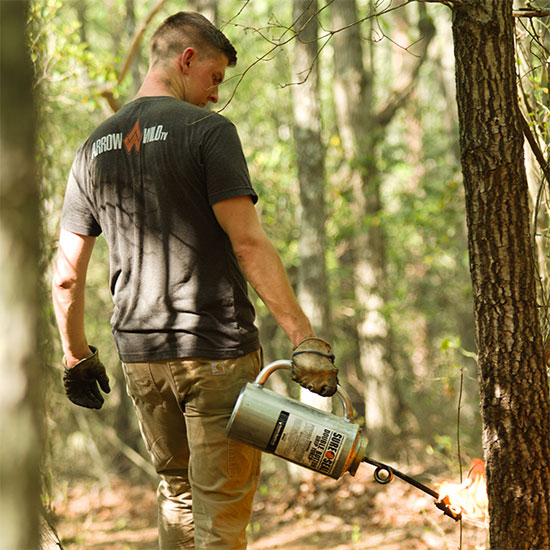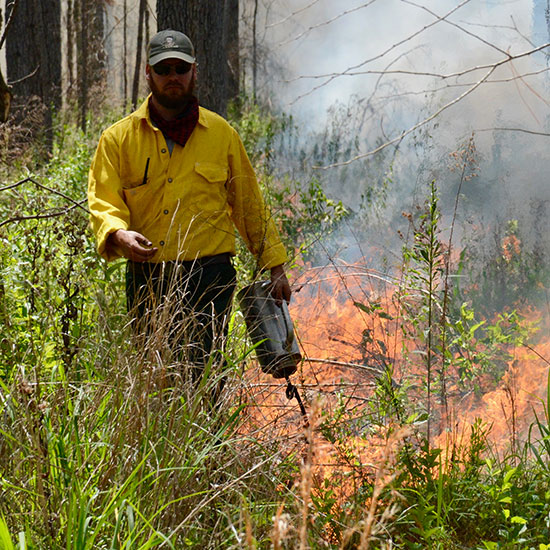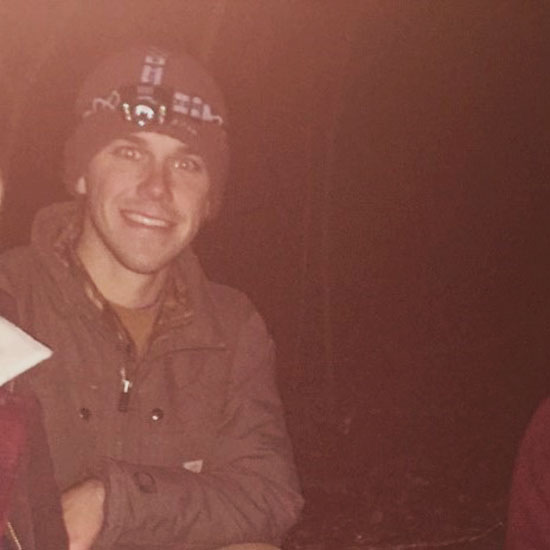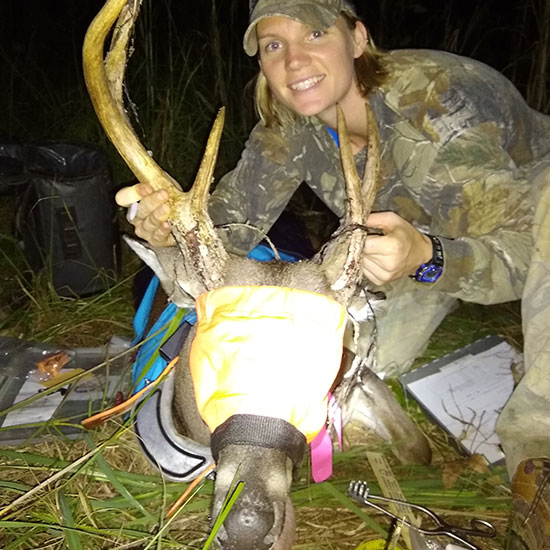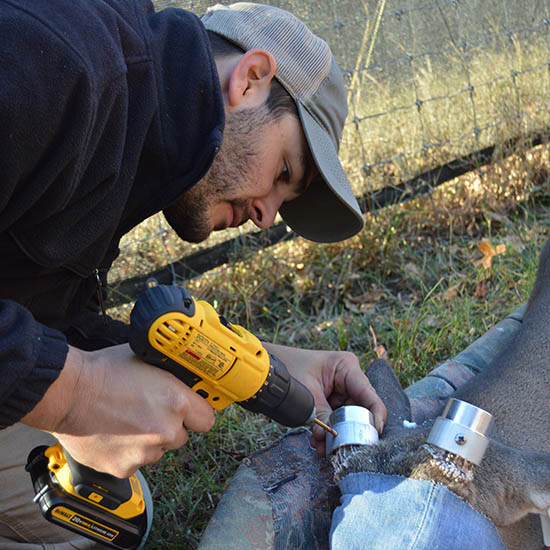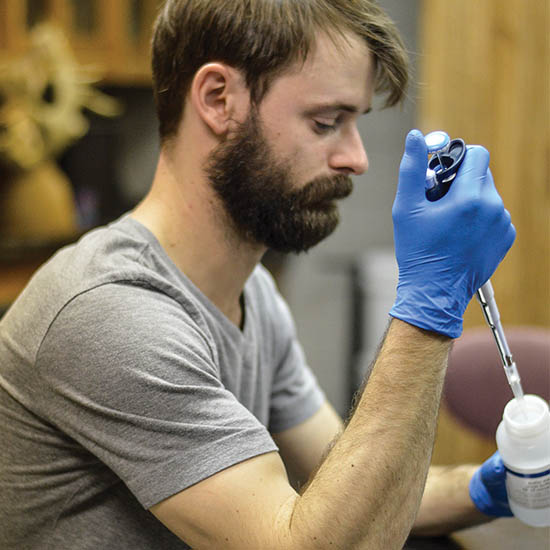Our People
Directors
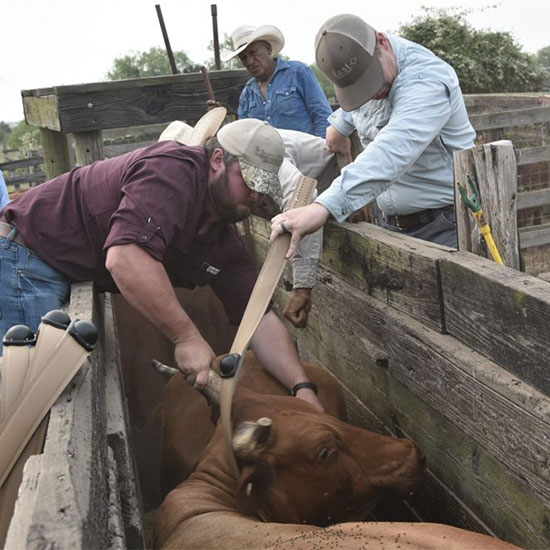
Dr. Jacob Dykes
Dr. Jacob Dykes is a wildlife biologist specializing in the ecology and management of white-tailed deer. Dykes leads applied research and conducts science-based outreach aimed at advancing wildlife and habitat management across the country. He is dedicated to bridging the gap between research and management, ensuring land managers have the tools and knowledge to effectively manage and conserve wildlife. His work spans a diverse range of species, including white-tailed deer, feral hogs, and collared peccary. Raised in rural Mississippi, Dykes is an avid outdoorsman with a lifelong passion for hunting, fishing, and all that is wild.
- Phone: 662-325-8141
- Email: jacob.dykes@msstate.edu
- Location: Thompson Hall, Rm A209, Mississippi State, MS 39762-9690
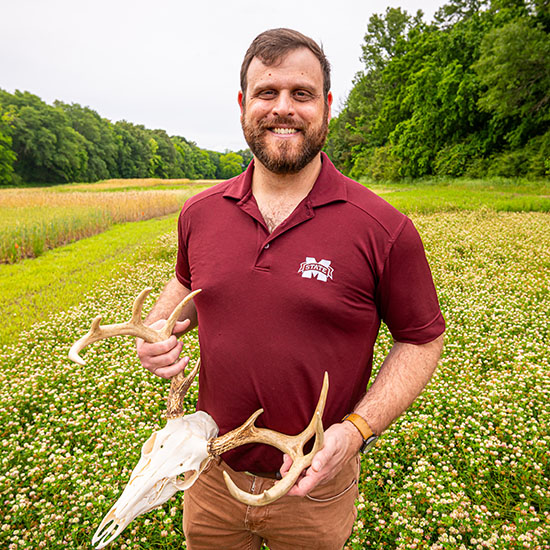
Dr. Eric S. Michel
Eric Michel is an ungulate ecologist specializing in white-tailed deer ecology and management. His research focuses on informing management through better understanding of the life-history traits of ungulates. He has conducted research on multiple aspects of deer ecology including assessing benefits of dominance behavior among captive white-tailed deer does, disentangling the effects of nutrition and genetics on antler and body growth, better understanding what factors most impact fawn survival, and helping to advance technology to improve efficiency of locating and tracking fawns. Dr. Michel addresses relevant management questions with pragmatic research that leads to advancing both ungulate management and science.
- Phone: 662-325-2618
- Email: eric.michel@msstate.edu
- Location: 247 Thompson Hall, Mississippi State, MS 39762-9690
Staff
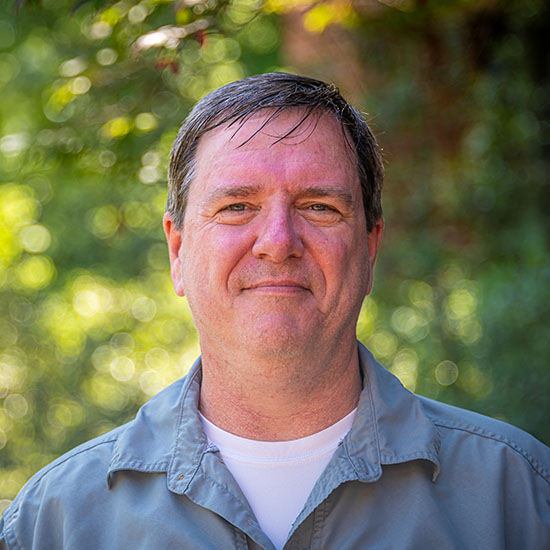
Bill Hamrick
Bill Hamrick has served the Department of Wildlife, Fisheries & Aquaculture at Mississippi State University as an Extension Associate since April 2008. In this position he conducts educational outreach to assist landowners and the public with wildlife management and wildlife damage related issues.
Previously, Bill was a Field Biologist/Research Technician for the Southeastern Cooperative Wildlife Disease Study (SCWDS) at The University of Georgia in Athens, GA and assisted with herd health evaluations and disease surveillance in white-tailed deer. Bill obtained his B.S. in Biology and General Science Education from Mississippi State University and his M.S. in Biology from Georgia Southern University.
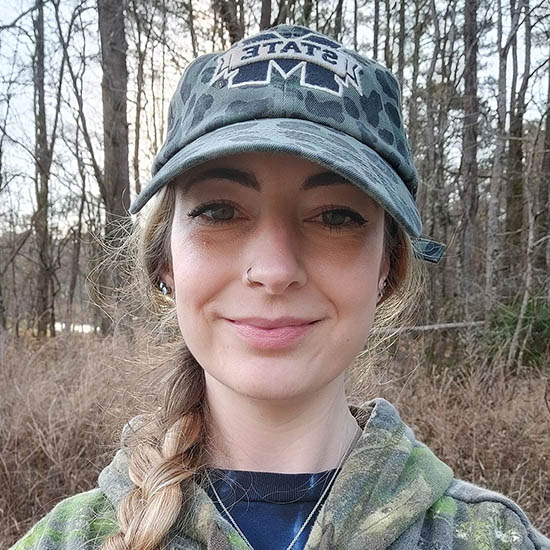
Dr. Natasha Neary
Hometown: Manchester, UK
Natasha is a Mathematical Ecologist and has been working as a Postdoctoral Associate within the Deer Lab since 2023, here she uses quantitative tools to answer questions about wildlife. Natasha's main work focuses on the economic impact of invasive wild pigs (Sus scrofa), comparing the financial costs of pig damage to the costs of trapping pigs. Natasha's work involves using aspects of the environment such as local crops and forest canopy to evaluate the space use of wild pigs and determine trapping effectiveness over the years. Natasha also works on understanding the activity levels of white-tailed deer (Odocoileus virginianus) at different times of day, across seasons and in changing weather conditions to estimate the mostly likely time for hunters to encounter deer. After studying mathematics for a number of years, Natasha studied for a PhD in the mathematical modelling of the space use of animals. In her PhD, Natasha modelled the movement patterns made by long-tailed tits (Aegithalos caudatus) using mathematics that describes the birds' memory of social interactions. Since then, Natasha has worked on modelling the social interactions of multiple species, including white-tailed deer, using a variety of modelling techniques.
Prior to working within the Deer Lab, Natasha worked as a postdoc in the Quantitative and Spatial Technologies lab in the department of Wildlife, Fisheries and Aquaculture at MSU. Natasha completed her BSc in Mathematics at Manchester Metropolitan University, her MSc in Mathematical Sciences at the University of Liverpool and her PhD in the School of Mathematics and Statistics at the University of Sheffield. Natasha is a trained teacher and has taught various mathematics classes at both undergraduate and graduate level, alongside giving public talks on the use of mathematics for understanding wildlife.
Keywords: Movement ecology, spatial analysis, animal interactions, mathematics, Turing patterns, python code, wild pigs, white-tailed deer
Students
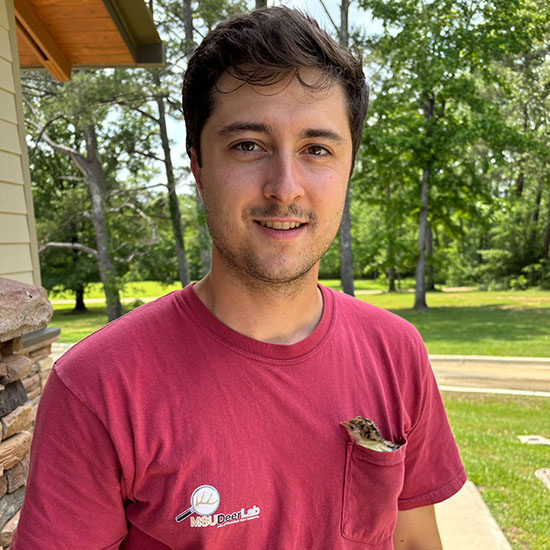
William Fowler
Hometown: Buchanan, Virginia
I am from the mountains of Virginia and grew up on a cattle farm where we own a good bit of forested land that became my refuge to chase whitetails (Odocoileus virginianus) and turkeys (Meleagris galapavo) with my family. My undergraduate degree is in Environmental Science from the University of Lynchburg in Lynchburg, Virginia where I also ran cross country and track. I performed undergraduate research investigating common milkweed (Asclepias syriaca) defense mechanism responses to herbivory. This experience opened the door to field work opportunities and my interest in pursuing a M.Sc. My field work experience includes working in Idaho trapping, radio collaring, and tracking Sage Grouse (Centrocercus urophasianus) for the Grouse and Grazing Project performed by the University of Idaho in conjunction with the Bureau of Land Management, Idaho Fish and Game, and several other partners. After I finished this technician position, I served as the Chronic Wasting Disease (CWD) Regional Logistics Coordinator for Region 7 of Montana Fish, Wildlife, and Parks where I led technicians in sampling whitetails, mule deer (Odocoileus hemionus), elk (Cervus canadensis), and moose (Alces alces) to monitor for CWD prevalence. I have also worked at The Preserve at Crooked Run in Fincastle, Virginia as a habitat manager and upland bird hunting guide.
I came to Mississippi State to better prepare myself for a career in habitat and wildlife management. I would like to work for a state agency, private habitat consulting firm, or start my own habitat management business back in Virginia. I am very interested in food plot management, prescribed fire, timber stand management, conservation practices associated with the Farm Bill, and helping landowners meet wildlife objectives for their property while still maintaining an income from their operation. While I am a member of the Deer Lab at MSU, I also am part of the Upland Avian Ecology Lab under my advisor Dr. Mark McConnell.
Keywords: Eastern wild turkey, regenerative agriculture, conventional tillage, conservation tillage, upland birds, galliformes, poult, habitat management, invertebrates, fire, disking
MSc/PhD/Undergraduate Research: M.Sc., Wild Turkey Foraging Ecology and Movement

Nick Walton
Hometown: Collinsville, MS
Bio: Senior majoring in Wildlife, Fisheries, and Aquaculture Science
Undergrad Research: This study is investigating the fluctuation of BRIX levels of common whitetail deer forages. It is based on previous studies that have shown that cattle will selectively consume plants and grasses with a higher BRIX content. It has also been shown that BRIX levels will fluctuate throughout the course of a day. Because both cattle and deer are ruminants, it could be possible that deer also will feed on forages with higher BRIX levels.
In the first part of the study, I have planted wheat, crimson clover, and rape. After these plants had matured in a greenhouse setting without any additives, I have measured the BRIX levels of these three plants at 12:00 AM, 6:00 AM, 12:00 PM, and 6:00 PM to view the fluctuation throughout the day. This process will be repeated with partridge pea, common ragweed, and beggar's lice. The goal of this project is to have an understanding of how the BRIX levels of these six common deer forages fluctuate throughout the day.
Keywords: BRIX Levels, Whitetail forage, BRIX fluctuation

Henry Parks
Hometown: Waverly, Minnesota
Fawn survival drives whitetail deer populations in the Minnesota farmland region, yet there is relatively little known about how fawns utilize space in the context of climatic variables, including temperature and precipitation. Home range sizes of fawns can be indicative of environmental and nutritional quality, variables that are impacted heavily by climate. As a past technician of the MN Fawn Survival and Movement Study, Henry observed physical changes on the ground during Summer 2024, a historic flooding year, which sparked an interest in understanding what life looks like for fawns in these conditions.
Henry is a recent graduate of the University of Minnesota - Twin Cities with degrees in Fisheries, Wildlife, and Conservation Biology & Environmental Science, Policy, and Management. As of May 2025, he is working as a technian with the Oklahoma State University Pronghorn Project, aiding in research looking at pronghorn fawn survival and movement. He plans to attend graduate school in the next couple of years after gaining more research experience with ungulates and other large mammals.
Keywords: Fawns, climate, weather, fawn home range dynamics, fawn survival, precipitation
Undergraduate (Class of 2025 from the University of Minnesota - Twin Cities, major: Fisheries, Wildlife, and Conservation Biology)

Parker Kreie
Hometown: Kimberly, WI
Estimating population parameters is essential for white-tailed deer management as these estimates will help implement proper management decisions and harvest regulations. However, estimating these parameters tends to be challenging when investigating deer populations across both publicly and privately owned lands. If one land type is favored over the other when sampling, the estimates will be misrepresented and biased. Therefore, we need to use a method that incorporates both land types, precise, and feasible.
Graduate student Parker Kreie will be investigating deer densities between publicly and privately owned lands using camera traps. Parker is in collaboration with the Minnesota Department of Natural Resources and will be collecting data in the Northeast region of Minnesota during the summer from 2024 to 2026. He will also be using a machine learning program, MegaDetector, to reduce the time of manual processing photos from camera traps.
Parker will first estimate density from the data collected using the space to event model produced by Moeller et al (2018 & 2021), which uses the amount of area sampled on the ground until the species of interest are encountered with camera traps. Parker will then observe the density trends throughout the three years of data collection to investigate the precision and feasibility of the space to event model. Then he will compare the deer densities between publicly and privately owned lands within his study area to see if there is spatial variation between land types.
Keywords: Camera Traps, Minnesota Department of Natural Resources, Space to Event Model, White-Tailed Deer, Machine Learning, Density Estimates
MSc/PhD/Undergraduate Research: MSc

Samuel Overfors
Hometown: St. Cloud, Minnesota
Recruitment of fawns into the population is a key driver of adult white-tailed deer (Odocoileus virginianus) population dynamics. Effective management strategies depend on a thorough understanding of fawn ecology. However, fawn survival and movement data in Minnesota is limited and outdated, and historically, technology has limited researchers’ ability to study them. By using GPS collars with high spatiotemporal resolution, Samuel Overfors’ research aims to address gaps in the literature surrounding fawn space use and movement ecology, as well as update survival data.
As part of the Fawn Survival and Movement Study with the Minnesota Department of Natural Resources, Overfors will be using a novel search method implementing unmanned aerial vehicles (UAVs) to locate white-tailed deer fawns. This method has thus far drastically increased search efficiency compared to traditional methods, averaging ~2.5 person-hours/fawn captured.
Overfors’ research seeks to determine if fawns shift their space use during their first summer of life, or if they simply expand their range as they grow. Recent findings suggest that fawns may be shifting space use in response to their anti-predator strategies, which has specific habitat management implications. To answer this question, Overfors will quantify area, dispersion, and overlap metrics to assess spatial shifts.
This study also provides a unique opportunity to document fawn dispersal and migratory movements. Overfors seeks to quantify the direction, distance, and frequency of these movements, providing novel insights for biologists and wildlife managers.
Keywords: White-tailed Deer, Fawn, Neonate, Space Use, Spatial Ecology, Movement Ecology, GPS Collars, Behavioral Ecology, Drones and UAVs, Wildlife Management
MSc/PhD/Undergraduate Research: MSc

Luke Resop
Hometown: Orrtanna, Pennsylvania
Luke grew up in the Appalachians of southcentral Pennsylvania where he developed an admiration for all things wild. He attended Virginia Tech for a B.S. in Wildlife Conservation, spent time in Tennessee working on habitat and elk management projects, and completed his M.S. in the MSU Department of Wildlife, Fisheries and Aquaculture, researching effects of prescribed fire on deer habitat.
Luke is currently working on his Ph.D. studying impacts of regenerative vs. conventional food plots on soil, plants, insects, deer, turkeys, and economics. In his spare time, Luke enjoys setting the woods on fire, spending time on the tractor, and of course, deer and turkey hunting.
Keywords: Habitat Management, Prescribed Fire, Food Plots, Old-Field Management
MSc/PhD/Undergraduate Research: PhD
Affiliates
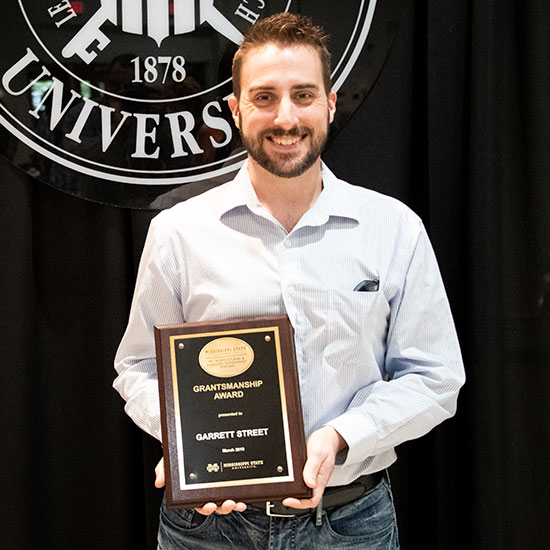
Garrett Street
Associate Professor
Garrett Street is a quantitative ecologist specializing in spatiotemporal dynamics in habitat selection and space use. His research focuses on linking fine-scale behavioral processes at the individual and population levels to broad-scale patterns of species distributions and abundance across broad geographic extents. He has addressed these issues using cutting edge statistical and simulation techniques in numerous deer species including moose (Alces alces), Roosevelt elk (Cervus elaphus roosevelti), and white-tailed deer (Odocoileus virginianus), and is dedicated to developing new ecological knowledge that can be applied to the improvement of wildlife management and conservation through the Southeast.
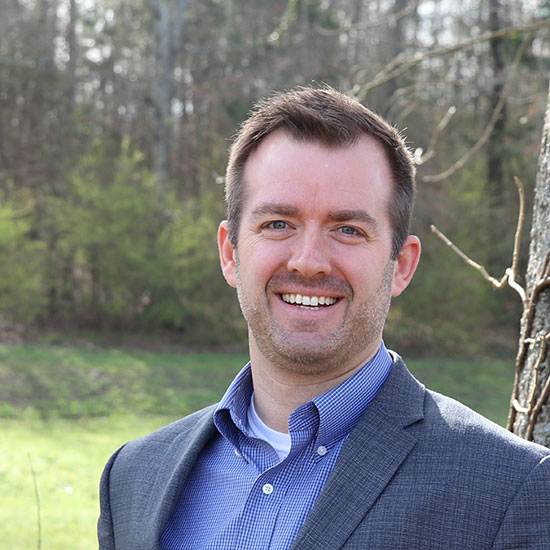
Ray Iglay
Associate Professor of Wildlife Ecology
Dr. Ray Iglay specializes in wildlife-habitat relationships, human-wildlife conflict mitigation, and improving technology applications to wildlife monitoring. Regarding deer management, these specialties have resulted in applied research about fire and herbicides for improving deer forage in mid-rotation pine stands, impacts of biomass plantings on deer use, and understanding deer reactions to oncoming vehicles. Upcoming research will include assessing long-term herbivory impacts, using thermal technology for mammal surveys, combating invasive species, and supporting the continued use of prescribed fire by landowners and professionals.

Bronson Strickland
St. John Family Professor of Wildlife Management
Extension Wildlife Specialist
Professional Member, Boone & Crockett Club


